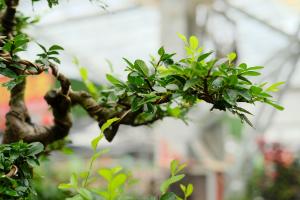Why Does Mold Grow in Plant Soil?
The Basics of Mold Growth in Soil
Mold is a type of fungus that thrives in moist environments. When it comes to plant soil, mold growth is a common issue. This is because soil is naturally moist, providing an ideal environment for mold spores to grow.
Mold spores are invisible to the naked eye, making it difficult to diagnose a mold problem in plant soil without careful inspection. However, if you start to notice a musty odor or see fuzzy growth on the surface of your soil, it's a sign that mold has taken hold.
The Causes of Mold Growth in Plant Soil
There are several reasons why mold may be growing in your plant soil. One of the most common causes is overwatering. When you water your plants too frequently or give them too much water at once, the soil becomes saturated. This creates a breeding ground for mold spores to grow.
Another cause of mold growth in plant soil is poor drainage. If your soil doesn't drain properly, it can become waterlogged, which again creates ideal conditions for mold to grow.
Other factors that can contribute to mold growth in plant soil include high humidity levels, poor ventilation, and using contaminated soil or water.
The Risks of Mold in Plant Soil
While mold is generally not harmful to plants, it can be a health risk to humans and pets. Mold spores can trigger allergies and asthma symptoms, and some types of mold can release toxic spores that can be dangerous to inhale.
In addition, mold growth in plant soil can be a sign of other issues, such as overwatering or poor drainage. These problems can lead to root rot, which can kill your plants.
How to Prevent and Remove Mold in Plant Soil
Preventing mold growth in plant soil is all about creating a healthy growing environment for your plants. This means watering your plants properly, ensuring proper drainage, and keeping humidity levels under control.
If you do notice mold growth in your plant soil, it's important to act quickly to remove it. You can do this by manually removing any visible mold from the surface of the soil, then adding fresh soil to replace what you removed. You may also want to treat the soil with a fungicide to prevent future mold growth.
To prevent mold from returning, make sure to follow proper watering and drainage practices, and keep the humidity levels in your growing environment under control.
In Conclusion
Mold growth in plant soil is a common issue that can be caused by a variety of factors, such as overwatering or poor drainage. While mold is generally not harmful to plants, it can be a health risk to humans and pets. To prevent and remove mold in plant soil, it's important to create a healthy growing environment for your plants by following proper watering and drainage practices. With the right care and attention, you can keep your plants healthy and thriving while preventing mold growth in your soil.

 how many times do yo...
how many times do yo... how many planted tre...
how many planted tre... how many pine trees ...
how many pine trees ... how many pecan trees...
how many pecan trees... how many plants comp...
how many plants comp... how many plants can ...
how many plants can ... how many plants and ...
how many plants and ... how many pepper plan...
how many pepper plan...































